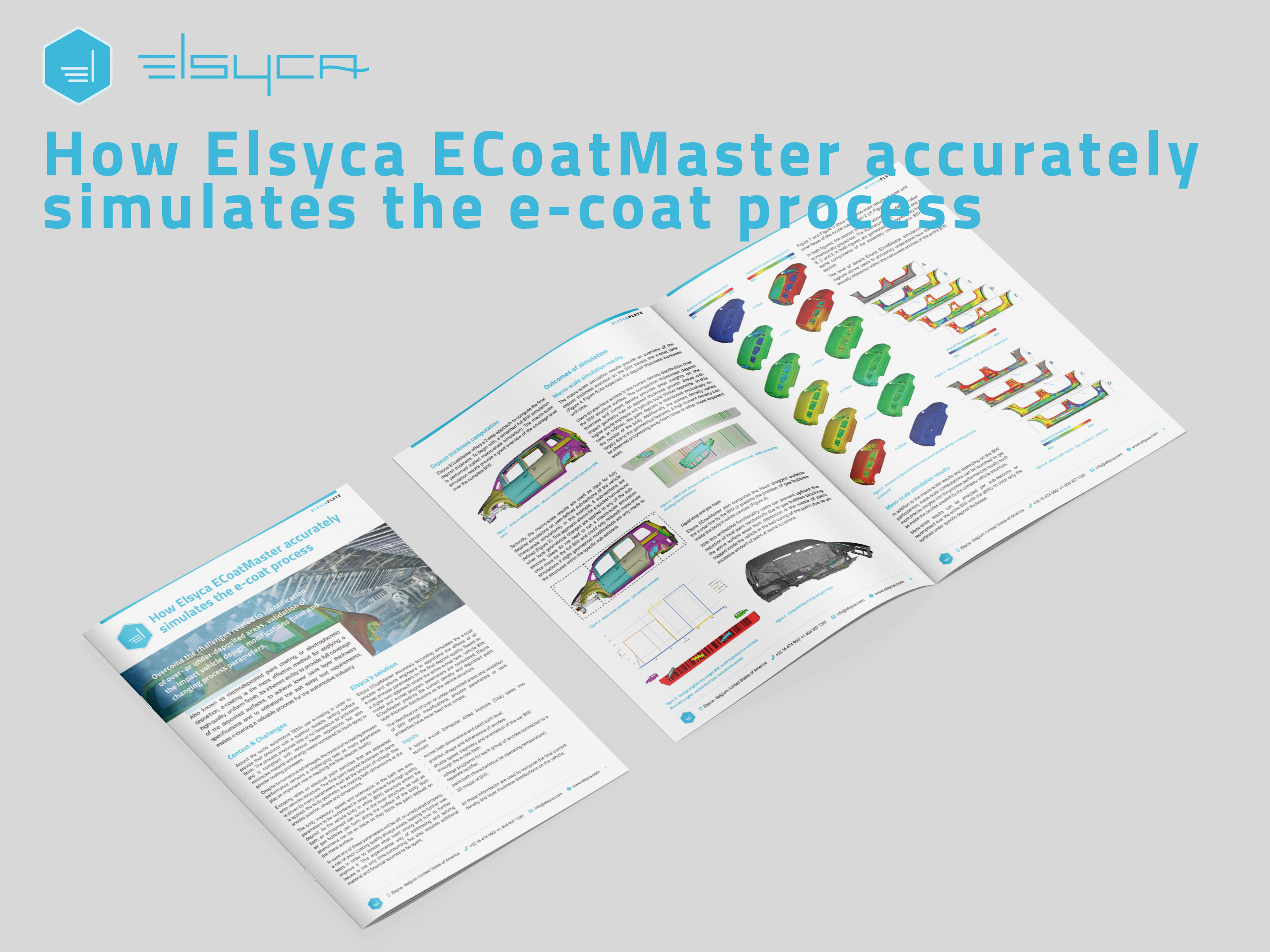
How Elsyca ECoatMaster accurately simulates the e-coat process
The identification of the surface risk areas and validation of the impact of design modifications and/or changing process parameters have never been that simple.

Also known as electrodeposited paint coating, or electrophoretic deposition, e-coating is the most effective method for applying a high-quality, uniform finish. Its inherent ability to provide full coverage of the deposited surfaces, to achieve lower paint layer thickness specifications and to withstand the salt spray test requirements, makes e-coating a valuable process for the automotive industry.
Context & Challenges
Around the world, automotive OEMs use e-coating in order to provide their products with a superior, durable, lasting surface finish. The process produces little or no hazardous air pollutants and is compliant with various health regulations but also minimizes material and energy waste compared to liquid spray or powder coating processes.
Despite its numerous advantages, the control of e-coating process performances remains a challenging task as many parameters play an important role in the final deposit quality.
E-coating relies on electrical paint particles that are deposited to coat bodies. The final paint deposit thickness on parts is driven by many parameters such as the amount of voltage that is applied, the body geometry, the coating bath dimensions or the anodes position, shape and dimensions. The body trajectory, speed and orientation in the bath are also parameters to be considered to achieve final high quality deposit. As the vehicle body in white (BIW) structure enters the bath, air entrapment can occur in the inner structure as well as air gas bubbles can form along the surface of the body. Both phenomena can be an issue as they block the paint deposit on the metal surface.
In case any of these parameters will be off or unadjusted properly, a risk of poor coating quality always exists leading to further wet tests in order to assess what went wrong and how to further improve it. This experimental way of addressing and solving issues is not only time-consuming but also requires additional material and financial sources to be spent.
Elsyca’s solution
Elsyca ECoatMaster accurately simulates the entire e-coat process and allows engineers to apprehend the effects of all e-coat parameters on the final deposit quality. Based on a digital twin approach where the entire e-coating line infrastructure, vehicle BIW and e-coating program parameters are considered, Elsyca ECoatMaster predicts the current density and deposited paint layer thickness on the car structure.
The identification of over- or under-deposited areas and validation of BIW design modifications, process parameters or tank properties have never been that simple.
